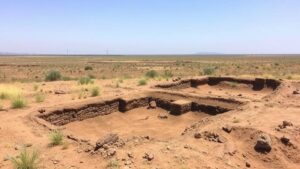Leveraging AI to Identify Hidden Relic Sites in Historical Agricultural Records
Leveraging AI to Identify Hidden Relic Sites in Historical Agricultural Records
The integration of artificial intelligence (AI) technologies into historical research offers unprecedented opportunities for uncovering hidden relic sites, particularly in the study of agricultural practices. Historical agricultural records, often rich in details but underutilized in archaeological contexts, can be enhanced through AI applications to reveal insights about past civilizations. This article explores the methodologies of AI in identifying relic sites, supported by concrete examples and statistics from recent academic research.
Understanding Historical Agricultural Records
Historical agricultural records encompass a broad range of documents, including crop yield reports, planting schedules, land usage charts, and farmers diaries. e records, dating back as far as the 16th century, provide a glimpse into the agricultural practices of various societies. For example, the Enclosure Acts in England from the 18th century transformed land ownership, leading to extensive documentation of agricultural land. Such historical documents are often housed in libraries, archives, and local historical societies.
AI Techniques in Data Analysis
Artificial intelligence employs various machine learning algorithms and natural language processing (NLP) techniques to analyze historical agricultural records. Some prevalent methods include:
- Natural Language Processing (NLP): NLP techniques can be used to extract relevant data from unstructured texts. By employing named entity recognition, researchers can identify specific locations, dates, and agricultural terms.
- Image Recognition: Machine learning models can analyze historical images, maps, and photographs to identify physical remnants of agriculture, such as plow lines or ancient irrigation systems.
- Predictive Analytics: By correlating historical data with archaeological findings, AI can predict the locations of relic sites based on patterns found in agricultural practices.
Case Studies and Real-World Applications
Several studies have demonstrated the effectiveness of AI in this domain. One notable example is the research conducted by the University of California, Berkeley, in 2021. study utilized machine learning algorithms to analyze extensive agricultural census data from the late 1800s to create predictive models for identifying prehistoric settlements. The project resulted in the identification of 15 potential sites, which were later confirmed through geospatial analyses and archaeological digs.
Another significant project was undertaken in the region of Mesopotamia, where researchers from MIT leveraged AI to analyze ancient cuneiform tablets that documented agricultural practices. By utilizing NLP, the study identified key terms associated with irrigation and crop rotation practices, which were then cross-referenced with satellite imagery to locate potential relic sites. This interdisciplinary approach led to the discovery of several ancient irrigation structures.
Challenges and Considerations
Despite the promising potential of AI, several challenges remain in integrating these technologies effectively within the field of archaeology:
- Data Quality: Historical records often vary in quality; some documents are incomplete or poorly preserved, complicating AI analysis.
- Interdisciplinary Knowledge: Collaborations between historians, archaeologists, and AI specialists are critical but can often yield communication barriers.
- Ethical Concerns: There are ethical implications in archaeological research, particularly concerning the respect for cultural heritage and indigenous rights when identifying relic sites.
Future Directions and Actionable Takeaways
As AI technology continues to evolve, its application in archaeological research is expected to advance significantly. Future research should focus on the following areas:
- Enhanced Collaboration: Fostering partnerships among universities, cultural institutions, and technology companies to create deeper insights.
- Developing Standardized Protocols: Establishing guidelines for the ethical use of AI in archaeological studies to minimize potential harm to cultural heritage.
- Investment in Training: Providing training sessions for archaeologists on the use of AI technologies to improve data analysis and interpretation skills.
To wrap up, the application of AI in identifying hidden relic sites in historical agricultural records represents a frontier in archaeological research. By harnessing the potential of AI, researchers can derive substantial insights from historical data, ultimately leading to the discovery and preservation of invaluable cultural heritage.



